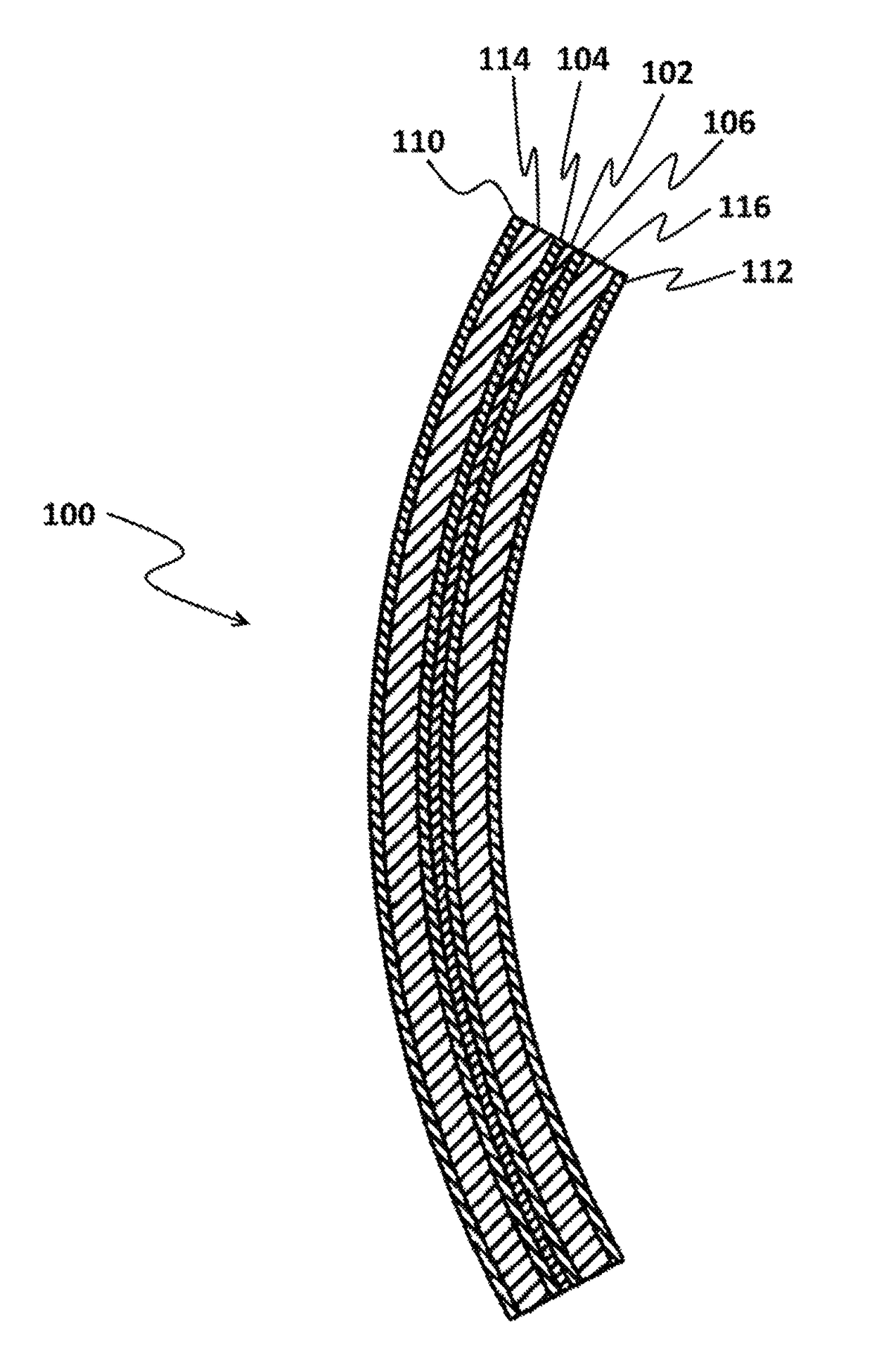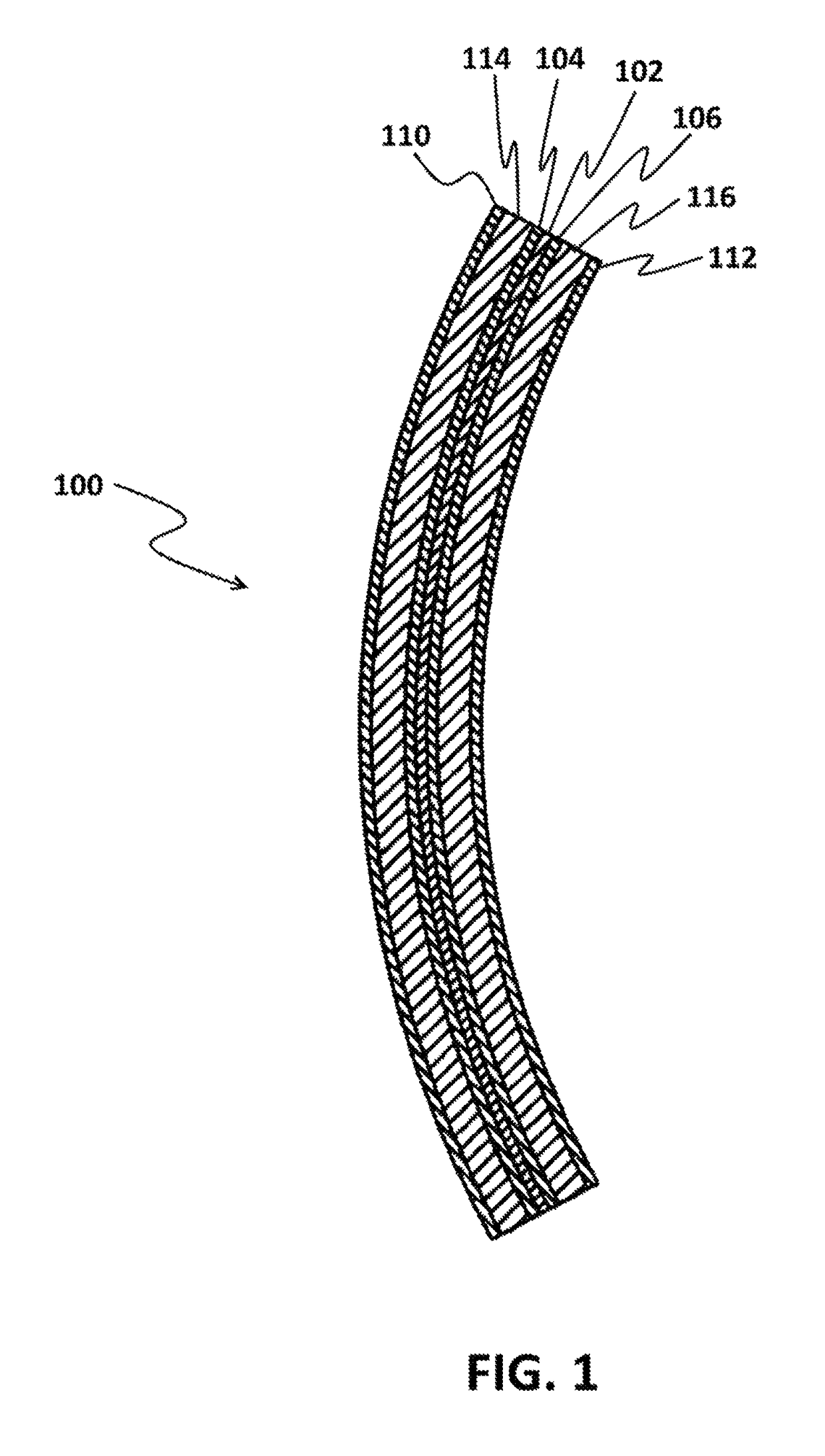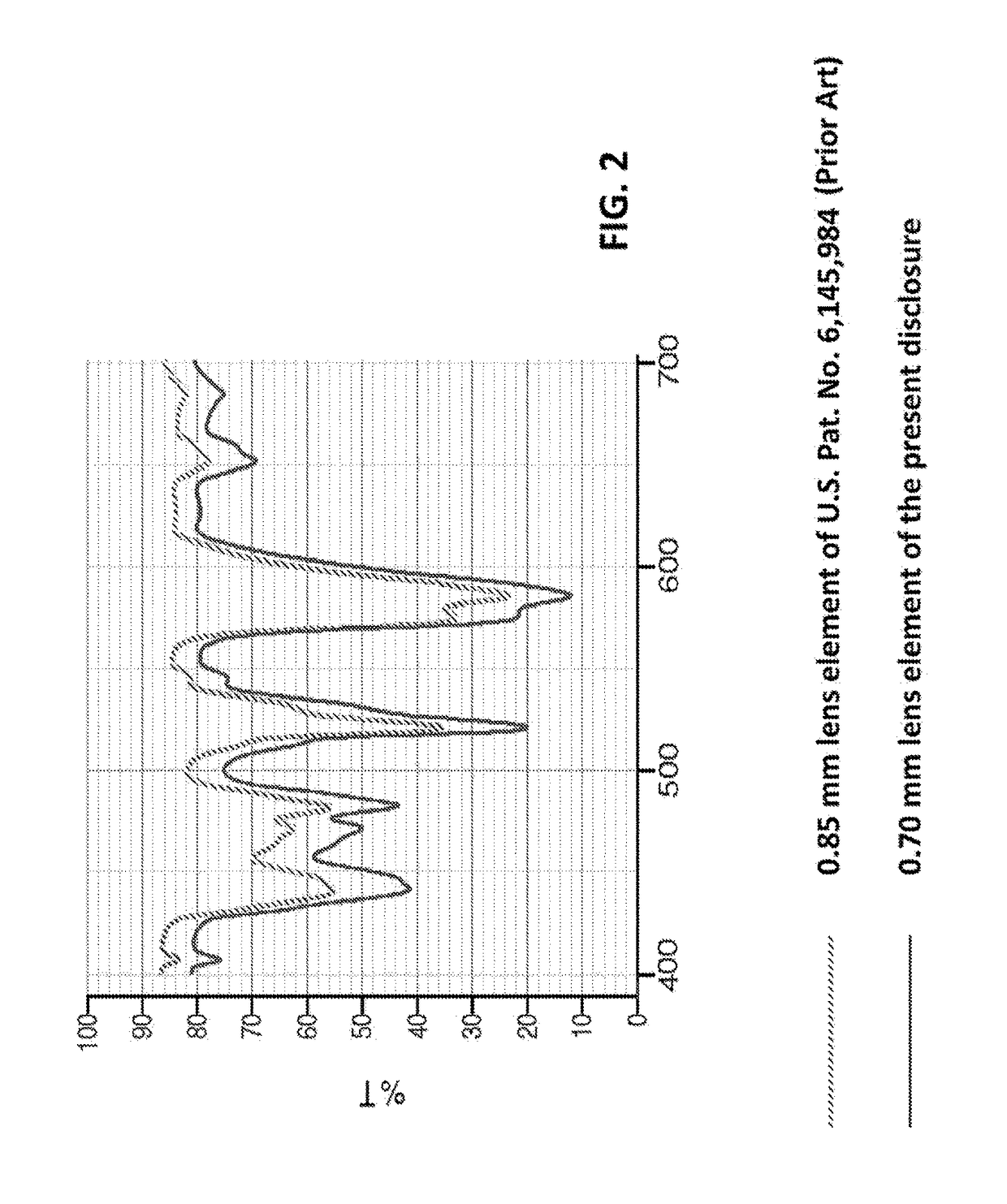Color-enhancing thin lens for eyewear
a thin lens and color technology, applied in the field of thin lens, can solve the problems of affecting the perception of color saturation and optical contrast, and aggravate certain eye conditions, so as to promote the sense of heightened accuracy and differentiation in viewed colors, improve the perception of color saturation and optical contrast, and improve the effect of visual acuity
- Summary
- Abstract
- Description
- Claims
- Application Information
AI Technical Summary
Benefits of technology
Problems solved by technology
Method used
Image
Examples
Embodiment Construction
[0011]Various embodiments are described below with reference to the drawings in which like elements generally are referred to by like numerals. The relationship and functioning of the various elements of the embodiments may better be understood by reference to the following detailed description. However, embodiments are not limited to those illustrated in the drawings. It should be understood that the drawings are not necessarily to scale, and in certain instances details may have been omitted that are not necessary for an understanding of embodiments disclosed herein, such as—for example—conventional fabrication and assembly.
[0012]Embodiments disclosed herein provide a thin profile lens with a color transmission profile that an optimized transmission profile of certain desired colors along selected wavelengths visible to a typical human eye (generally in the range of about 400 nm to about 700 nm), where that optimized transmission profile includes reduced transmission of certain ot...
PUM
| Property | Measurement | Unit |
|---|---|---|
| transmittance | aaaaa | aaaaa |
| transmittance | aaaaa | aaaaa |
| transmittance | aaaaa | aaaaa |
Abstract
Description
Claims
Application Information
 Login to View More
Login to View More - R&D
- Intellectual Property
- Life Sciences
- Materials
- Tech Scout
- Unparalleled Data Quality
- Higher Quality Content
- 60% Fewer Hallucinations
Browse by: Latest US Patents, China's latest patents, Technical Efficacy Thesaurus, Application Domain, Technology Topic, Popular Technical Reports.
© 2025 PatSnap. All rights reserved.Legal|Privacy policy|Modern Slavery Act Transparency Statement|Sitemap|About US| Contact US: help@patsnap.com



